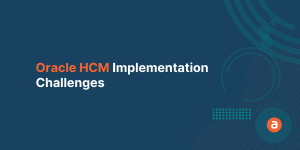Companies invest huge amounts of money in technologies to help employees increase productivity and efficiency but what if your users are not using the tech to the fullest potential. This results in lost productivity and RoI becomes negative.
One of the biggest barriers to user adoption is users being unprepared to learn something new. An organization must focus on achieving user adoption to make its employees embrace new technology, use it the way it is intended, and leverage it to the maximum. This can happen with an effective user adoption strategy in place.
In 2021, IT spending on enterprise software is expected to amount to around 599 billion U.S. dollars worldwide, a growth of 13.2% compared to 2020. Only if users accept the change and commit to using the applications, can the companies ensure positive returns from their investment.
What is User Adoption?
User adoption is the process of getting users of software or technology to use it the way it is intended and help them make the most out of it. A user adoption strategy can help companies boost productivity, provide a better user experience, increase user engagement, and lower churn rates.
How can you Improve User Adoption at your organization?
If your organization has a low user adoption rate, it’s a sign that the majority of your workforce is not realizing the value of your software and not using it to its fullest potential. To overcome this situation, companies must work on building user adoption strategies to help new users adopt technology very efficiently.
To improve user adoption, here are the top 7 user adoption strategies that companies can leverage:
User Adoption Strategy #1: Verify the Need
One of the first things you should understand when working on an adoption strategy is finding out the necessity of the technology for your business. At times, it may seem tempting to integrate an exciting new technology, but oftentimes, they are unnecessary additions to your tech stack and can cost you a lot.
This can happen due to the unavailability of trained personnel to navigate through the new platform or technology, so training your workforce is an incurred cost.
Figure out what your present needs are and what your future plans might look like and see where the new tech will fit in between those needs. This is where communication becomes a pivotal aspect of any good digital adoption strategy.
Plan out how to roll out new technologies and make your team aware of the phases in which they’ll have to adopt the new technology as well. This should entail what the technology is, how it works, and its role in their day-to-day work.
User Adoption Strategy #2: Turn New Technology Releases into Events
To make new technology more interesting to your workforce, seek the help of your marketing and PR team to plan and create an event celebrating the deployment of the new tech.

Team members can take a break from working to attend the event in person or via video conference. Company leaders can share with the employees how the new tech will impact them and their teams, showing real-life examples of how the new tech will make work easier.
People are typically hesitant when it comes to adopting new tech but by introducing it through an event, reminding users about the benefits it offers, and providing training opportunities, you can help your users successfully adopt the new technology.
User Adoption Strategy #3: Establish a Pilot Program
A critical initial step is to do a needs study, which should include shadowing and user focus groups to identify gaps. By involving the end-user in the process, you can ensure that the solution is developed with the user’s needs in mind. Companies can establish a pilot program to evaluate the feasibility of the tech.

Pilot operations are undertaken in a controlled environment that enables extensive monitoring and evaluation. Participants in the pilot program must be early adopters, who can then advocate for improvements and aid with training in their respective sectors.
Evaluate the influence of the technology and its procedures and workflow on the test group while the pilot is running. When planning a pilot program, provide time for revisions before expanding to a broader group.
User adoption strategy #4: Encourage a Rewards Program
Remind team members of the benefits of the new tech, ask them to give feedback, and host Q&A sessions where users get useful tips and tricks.

Create a welcoming atmosphere when hosting these sessions so that the employees have no inhibitions. Also, create friendly competition among your employees. This is great for boosting engagement at your organization.
Whether you are letting entire departments compete with each other or allowing people to compete as individuals, set progressive measurable goals to allow people to increase their level of adoption. This ensures that the adoption process continues after receiving each reward.
User Adoption Strategy #5: Explain the Benefits and Inspire
Users contribute their skills and knowledge to achieve optimum benefit from the adopted technology. The company’s adoption process must also ensure that the users are aware of what the technology can do, its purpose, and how to use it.

Even if the technology you’re presenting is highly straightforward, various departments may use it in different ways, and sharing tried and tested use cases to each department can help speed up digital adoption.
When you share the success that one department has had with new technology, you inspire others to use it in new ways, which increases the potential ROI from your technology. You can use a range of training modules to accelerate the adoption of new tech at your business the next time you introduce it.
User Adoption Strategy #6: Communication and Support
One of the most common issues that an organization faces while adopting new tech is poor communication. Communicate news about any current and future training and prospects and offer the support they might need when adopting new technology.

Even with the proper training material and lessons, dealing with an entirely new platform or software can be daunting. Assisting your team at all moments is pivotal for making the integration a success.
Let your users ask as many questions as possible and be prepared to answer them. Until your users get comfortable working with the new tech, you will not get results. Good communication is necessary when it comes to any changes in a business.
User Adoption Strategy #7: Periodical Follow-Up
End-users input should always be considered and incorporated into transforming the adoption process. Although this phase is time-demanding, it helps provide the groundwork for future buy-in and trust in the program.

After all the training, communication, and hands-on use, there will likely be a few users who will not fully adopt the new technology, or the technology may not work for them as expected.
Make a plan to follow up with your users periodically to check how the technology is working and how to continually improve. This step helps identify gaps in your user adoption strategy and also builds trust as this allows users to provide honest feedback that can make a difference in the company.
Conclusion
Users should be trained and given time to learn and understand what they are using. Users can perform better if they know what you expect them to do and how they can do it. Your end-users roles and job complexities must be considered while creating a training strategy.
People within an organization will have varying requirements and adapt to change at varying rates. It’s critical to plan beyond the initial how-to training. To ensure user adoption and successful new user onboarding and training, companies can leverage a Digital Adoption Platform (DAP).
Whether you are onboarding a new user to an existing application or switching to a new application, a DAP can ensure seamless digital adoption. It can boost user productivity, increase returns from tech investments, keep your users engaged for the long term and ensure the successful adoption of your software stack.













